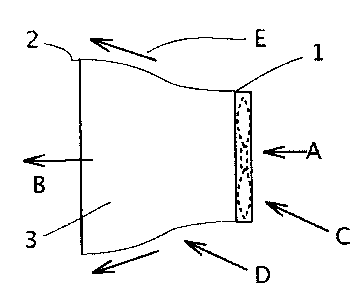Some of the information on this Web page has been provided by external sources. The Government of Canada is not responsible for the accuracy, reliability or currency of the information supplied by external sources. Users wishing to rely upon this information should consult directly with the source of the information. Content provided by external sources is not subject to official languages, privacy and accessibility requirements.
Any discrepancies in the text and image of the Claims and Abstract are due to differing posting times. Text of the Claims and Abstract are posted:
| (12) Patent Application: | (11) CA 2605835 |
|---|---|
| (54) English Title: | WIND BOOSTER |
| (54) French Title: | SURPRESSEUR EOLIEN |
| Status: | Deemed Abandoned and Beyond the Period of Reinstatement - Pending Response to Notice of Disregarded Communication |
| (51) International Patent Classification (IPC): |
|
|---|---|
| (72) Inventors : |
|
| (73) Owners : |
|
| (71) Applicants : |
|
| (74) Agent: | |
| (74) Associate agent: | |
| (45) Issued: | |
| (22) Filed Date: | 2007-10-03 |
| (41) Open to Public Inspection: | 2009-04-03 |
| Availability of licence: | N/A |
| Dedicated to the Public: | N/A |
| (25) Language of filing: | English |
| Patent Cooperation Treaty (PCT): | No |
|---|
| (30) Application Priority Data: | None |
|---|
The present invention is a method and apparatus to increase air speed through
a turbine
such as in a wind power generator. The method comprises creating a low
pressure area behind
(or, downstream) of the turbine so as to cause the wind entering the turbine
to be accelerated
thereby adding torque for the turbine to turn the generator. The apparatus
comprises a
generally conic shaped, open-ended hood that extends behind the turbine to act
as an airfoil
and so cause an increase in air speed along its lengthening outer surface,
which, in turn,
lowers the pressure in the interior of the hood. Wind will thus be 'drawn'
into the resulting
partial vacuum thereby raising wind speed. Also disclosed is a mobile use
where a turbine
generator is shrouded to the the rear of a vehicle with an opening to enable
fir flow to enter
the shroud and drive the turbine as the air seeks the naturally-occurring low
pressure area to
the rear of the vehicle and shrouded turbine.
Note: Claims are shown in the official language in which they were submitted.
Note: Descriptions are shown in the official language in which they were submitted.

2024-08-01:As part of the Next Generation Patents (NGP) transition, the Canadian Patents Database (CPD) now contains a more detailed Event History, which replicates the Event Log of our new back-office solution.
Please note that "Inactive:" events refers to events no longer in use in our new back-office solution.
For a clearer understanding of the status of the application/patent presented on this page, the site Disclaimer , as well as the definitions for Patent , Event History , Maintenance Fee and Payment History should be consulted.
| Description | Date |
|---|---|
| Application Not Reinstated by Deadline | 2012-10-03 |
| Time Limit for Reversal Expired | 2012-10-03 |
| Inactive: Adhoc Request Documented | 2012-07-05 |
| Deemed Abandoned - Failure to Respond to Maintenance Fee Notice | 2011-10-03 |
| Application Published (Open to Public Inspection) | 2009-04-03 |
| Inactive: Cover page published | 2009-04-02 |
| Inactive: Correspondence - Formalities | 2008-12-29 |
| Inactive: IPC assigned | 2007-12-10 |
| Inactive: First IPC assigned | 2007-12-10 |
| Inactive: IPC assigned | 2007-12-10 |
| Inactive: Filing certificate - No RFE (English) | 2007-11-16 |
| Application Received - Regular National | 2007-11-16 |
| Amendment Received - Voluntary Amendment | 2007-10-22 |
| Small Entity Declaration Determined Compliant | 2007-10-03 |
| Abandonment Date | Reason | Reinstatement Date |
|---|---|---|
| 2011-10-03 |
The last payment was received on 2010-07-28
Note : If the full payment has not been received on or before the date indicated, a further fee may be required which may be one of the following
Patent fees are adjusted on the 1st of January every year. The amounts above are the current amounts if received by December 31 of the current year.
Please refer to the CIPO
Patent Fees
web page to see all current fee amounts.
| Fee Type | Anniversary Year | Due Date | Paid Date |
|---|---|---|---|
| Application fee - small | 2007-10-03 | ||
| MF (application, 2nd anniv.) - small | 02 | 2009-10-05 | 2009-08-10 |
| MF (application, 3rd anniv.) - small | 03 | 2010-10-04 | 2010-07-28 |
Note: Records showing the ownership history in alphabetical order.
| Current Owners on Record |
|---|
| WINSTON MACKELVIE |
| Past Owners on Record |
|---|
| None |